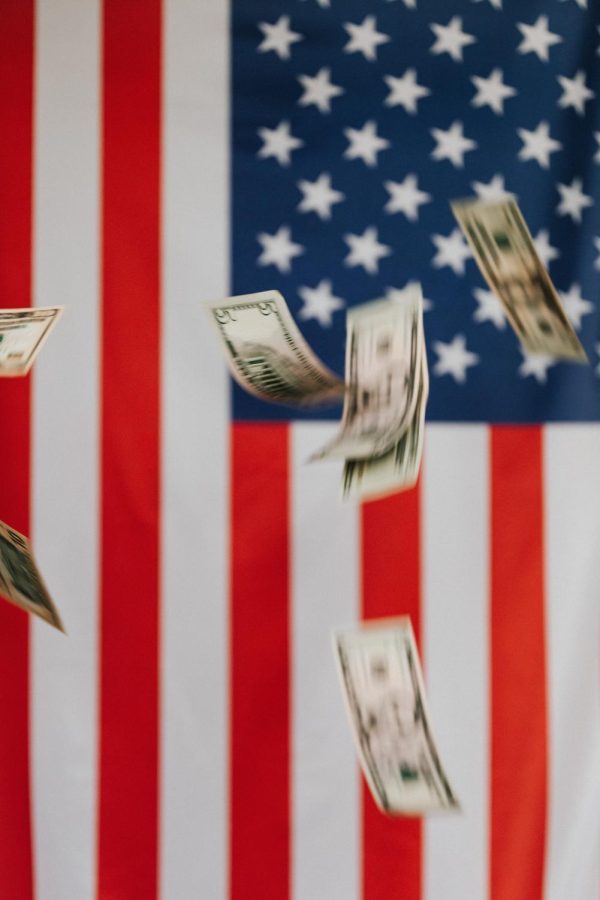Are sky-high prices bringing you down?
While the pandemic may be a factor in rising inflation, it has more to do with supply and demand.
Sep 21, 2022
The August consumer price index came out recently, and the results were not pretty. The index rose 8.3% since last year, according to Jeff Cox of CNBC. The food at home index rose 13.5%. Core inflation rose 6.3%. The claim that inflation would be transitory, or temporary, seems laughable now.
Obviously, most consumers realize that food prices are not as cheap as they used to be and are still going up. However, President Biden has a different take on the situation. In an interview with CBS “60 Minutes”, he said that the inflation rate was just an inch up month-to-month. He also pointed out that energy prices have come down and more jobs have been added.
However, inflation is the economic issue that hits closest to home for most voters. It is the issue that could determine key midterm elections in November that will decide which party has control of both Houses of Congress.
While it’s true gas prices have come down recently, it is not as good as it looks. Although gas prices in the Midwest are down to about $3.52 according to the U.S. Energy Administration, at this same time last year, gas prices were about $3.07. Two years ago, gas prices were about $2.04. Prices peaked in June at $4.97, so they have come down substantially. However, the way the White House has gone about achieving this goal is by releasing oil from the Strategic Oil Reserves. The original plan called for 180 million barrels, or about 32% of the reserve, to be released, according to Valerie Pavilonis of USA Today. Most of those barrels have been released. The Strategic Oil Reserve is at its lowest level since 1985. With tensions rising around the world due to the war in Ukraine and Biden also confirming that the U.S. would defend Taiwan from China with troops in his interview, saving the reserves in case of a conflict may have been more prudent. The relief on wallets is beneficial, but the move seems to have been made with little foresight.
Some thought inflation was only being driven up by gas prices. It makes sense, since the world economy is so dependent on oil. Also, most products we enjoy are affected by gas through transportation and production. However, despite the fall of gas prices, food prices are still rising. Inflation has not come down. So, what caused this inflation besides an oil shortage?
Some have blamed the pandemic, and is a way they are correct. Inflation is caused by different factors, but it usually boils down to supply and demand. During the pandemic, many businesses and producers were shut down. This caused a shortage of supply. Since then, trying to recover from those shutdowns has led to supply chain disruptions, further reducing the supply. Other shortages that have driven up inflation include cars, lumber and real estate.
Another problem with supply was an excessive supply of money due to the federal government pouring money into the economy through stimulus checks and PPP loans. It may seem beneficial to give people money to combat inflation, but in truth it sped inflation up. The more of something there is, the less valuable it is. Printing too much money then causes it to be less valuable. In reality, part of the problem is not inflation of prices; it is the deflation of the value of the dollar.
Meanwhile, the extra money created a demand to spend it. When you combine a lower supply of goods and services, a greater supply of money, and high demand, prices go up, and inflation results. With many people being let go from their jobs during the pandemic and some being hesitant to return to work, prices for labor rose, which also increased the costs in production of goods, raising prices.
Gas prices obviously played a key role as well. During the pandemic, less people traveled, and so demand for gas was low. As people began to travel more, demand increased, and gas prices rose. New climate policies since President Biden took office have made it more difficult for oil companies to drill and process oil to meet the demand, leading to increased gas prices, which accelerated the overall rate of inflation even more.
What is the solution to bringing inflation down without going into a full-blown recession? The Federal Reserve plan has been to bring down demand by increasing interest rates. Also, the high prices could drive down demand, as people simply cannot afford to buy products and services and must find a way to adjust. However, President Biden and Congress may not have gotten the memo, as massive government spending is planned through the Inflation Reduction Act and Biden’s student loan forgiveness plan.
Perhaps, instead of driving down demand by high prices and interest rates, the better solution would be to increase the supply. Giving the government control over fixing the supply chain issues is not a good solution, as history points to horrible inefficiency when federal governments control the economy. Some of the supply needs time to increase, such as food and problems caused by supply chain issues. The war in Ukraine may hurt it even more, since Ukraine is a major contributor to the world’s food supply. However, other aspects may be easier to correct, such as the oil supply. By allowing more freedom for oil companies to drill, gas prices could be brought down with a natural supply instead of a temporary fix in taking from our Strategic Oil Reserves.
In short, inflation is a complicated problem with few obvious solutions. The biggest problem seems to be shortages and supply chain disruptions, and those may take time to fix. Continuing to bring down energy prices through an increase in domestic supply will help. Billions of more government spending, coupled with claims that the economy is in great shape despite the inflation and hopes that the inflation is temporary, does not seem to be working.









